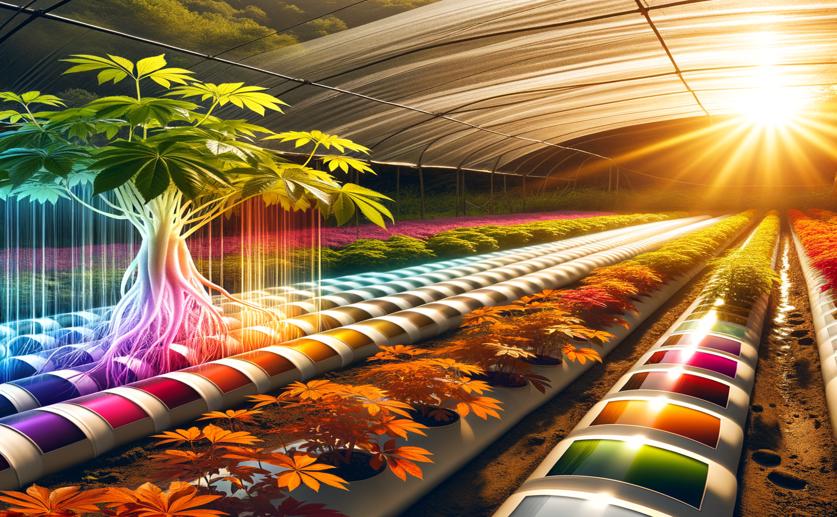
Developing Clear Films to Improve Ginseng Growth Using Color Design
Jenn Hoskins
15th March, 2024

Image Source: Natural Science News, 2024
Key Findings
- Researchers developed a film to improve light for ginseng farming, mimicking forest conditions
- The best film mix was found: two yellow and three blue pieces, each 15x15 cm
- This film increased ginseng leaf size, photosynthesis, root weight, and medicinal compounds
AgricultureBiotechPlant Science
References
Main Study
1) Creating a new yellow and blue combination transparent film for Panax ginseng C.A. Meyer growth based on orthogonal designs.
Published 15th March, 2024
https://doi.org/10.1016/j.heliyon.2024.e26814
Related Studies
2) Manipulation of light spectrum can improve the performance of photosynthetic apparatus of strawberry plants growing under salt and alkalinity stress.
3) Effects of light spectrum on morpho-physiological traits of grafted tomato seedlings.



 7th March, 2024 | Jim Crocker
7th March, 2024 | Jim Crocker